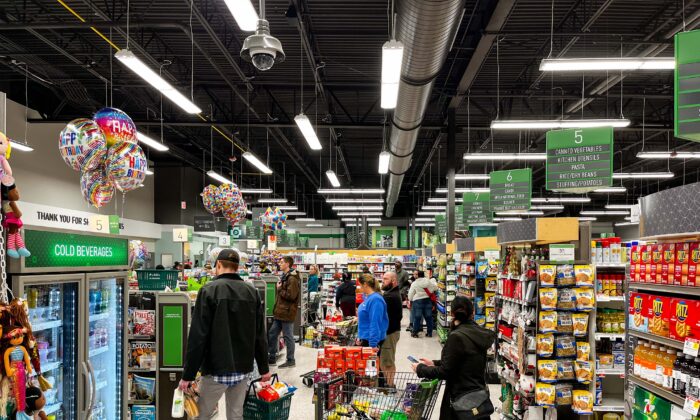By Milton Ezrati
Commentary
Since the recovery from COVID-19 lockdowns began, American households have provided the economy’s driving force. Homebuying and homebuilding boomed, and retail purchases soared in 2021 and early 2022.
That picture has changed, however, as rising interest rates have rendered home ownership too expensive for many, and inflation has cut deeply into the buying power of people’s incomes. Prospects now hardly point in the direction of growth and prosperity. Instead, they point to a developing recession—if the economy is not already in one.
Homebuying and homebuilding had led for a long time. During the second half of 2020 and 2021, purchases of new homes leaped upward. By the end of 2021, buying was running some 25 percent above pre-pandemic levels. Construction naturally followed, with starts of new housing units rising by the end of 2021, some 24 percent above pre-COVID levels.
Both activities became casualties this year. Inflationary pressures gave the Federal Reserve (Fed) little choice but to tighten credit. Rising interest rates since last March saw 30-year mortgage rates more than double from a low of 3.29 percent to 6.80 percent most recently. This heightened cost of financing made home ownership simply unaffordable for many Americans. Accordingly, home purchases tumbled after March, falling some 9.5 percent through November. Not surprisingly, starts of new home construction dropped by 16.8 percent.
Residential construction accounts, on average, for only about 3-4 percent of the economy as measured by the gross domestic product (GDP), but it affects much else. When homebuying falls, households buy fewer furniture and appliances as well as home repair supplies. Alone, these secondary effects would have slowed consumer spending, but the inflation has burdened the consumer still more.
Even as wages rose at historically rapid rates, inflation raised living costs still faster. During the first three quarters of 2022, the Commerce Department reports that household incomes from wages and salaries rose at a 6.2 percent annual rate. But consumer prices rose at an 8.0 percent annual rate during that time, more than offsetting the purchasing power of their expanded nominal incomes.
For a while, people tapped their credit cards to keep up their buying, but such behavior can only go so far. They had to slow the pace of new purchases. So, while retail sales during the first half of 2022 rose at an impressive 9.0 percent annual rate, such sales since June have barely grown at all. In assessing this remarkable halt in sales growth, it is critical to keep in mind that the retail sales measure is a nominal figure. After considering inflation, the picture shows a decline in real consumer spending.
Especially disturbing is the wide pattern of decline evident in the recent retail sales figures. In November, overall nominal sales fell 0.6 percent from October’s level, 7 percent at an annual rate. Only four of the 12 major categories showed any nominal growth at all, much less real growth. Sales of big-ticket items showed the steepest declines. Auto sales fell 2.3 percent in November alone, furniture fell 2.6 percent, electronics fell 1.5 percent, and building materials fell 2.5 percent. This is telling because cash-strapped consumers first cut back on these sorts of outlays. They are easier to postpone. It is harder to cut back on soap, groceries, medicine, and the like. And indeed, healthcare items and food were two of the four categories to show an increase. Another included bars. Perhaps, householders feel a need to drown their sorrows and find sympathy in their local tavern.
True, November is just one month, and a single month’s figures do not make a trend. But usually, the overall figure—whether encouraging or disappointing—consists of a mix of growth in some categories and declines in others. That is to be expected since households typically hold back on one kind of spending when they splurge on another. The month when a working family buys a car is the month when it decides to dine out less than otherwise. It is then telling that November was almost universally cutbacks. This fact and the more general trends point to more of the same as the economy enters 2023.
If it is not a pretty picture, the cause of the economic trouble does, however, offer a reason to look for recovery later in 2023. If the Fed’s efforts can restrain inflation—not entirely unlikely—households could easily return to more aggressive spending patterns. Success on inflation might also prompt the Fed later in the new year to ease on its credit restraint policies and perhaps reverse its present policy of hiking interest rates. That might foster a return to homebuying and building, if not in late 2023, then in 2024.






